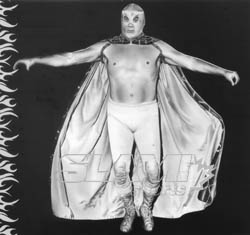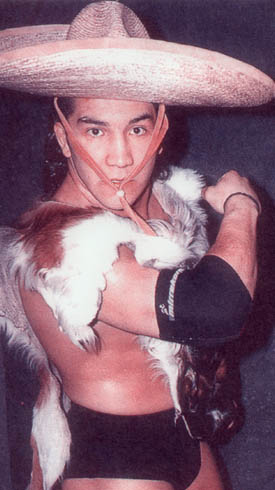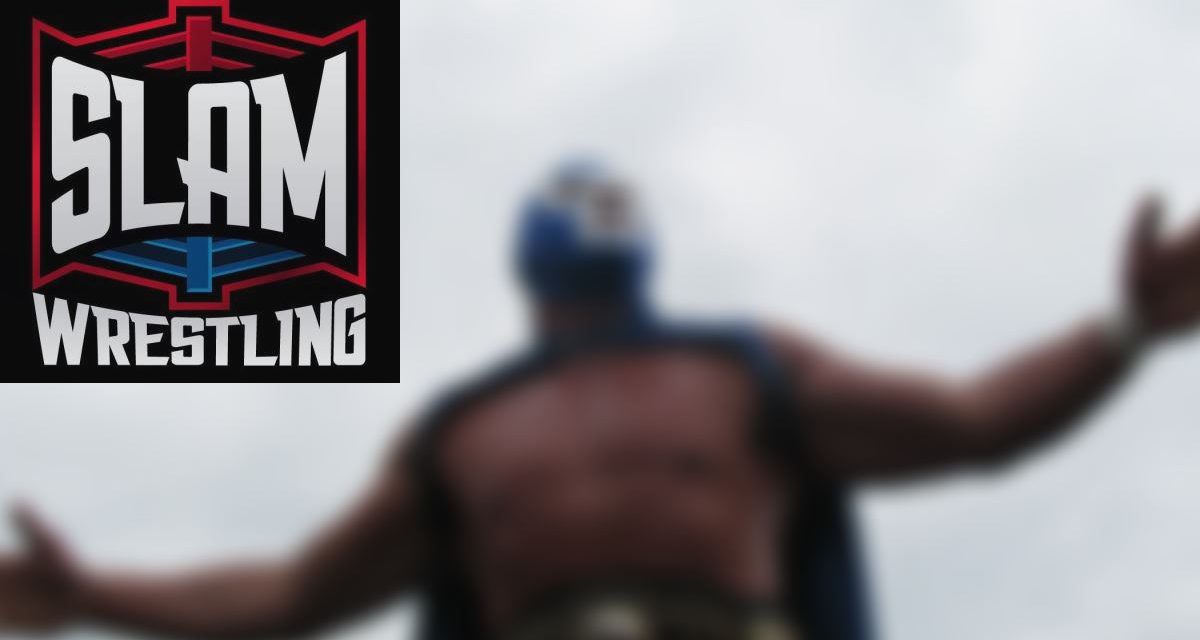With lucha libre returning to Canadian airwaves on Friday, September 10 at midnight ET and Saturday, September 11 at 4:30 pm ET on TLN, SlamWrestling.net invited journalist Michael Paszt to re-introduce both the style of wrestling and the CMLL product.
To simply say that lucha libre is just wrestling in Mexico is to do the sport an injustice. Lucha libre is all over the country; whether you’re in Baja California or on a street corner in Mexico City, some aspect of it can be found. In a country of 100 million people, at least 90% of all Mexicans can identify with two of the most adored and revered iconic images: The first one is the beloved “Virgin of Guadalupe” and the second one is the silver mask of the legendary “El Santo”, Mexico’s most famous wrestler.

El Santo. Photo: Dr. Mike Lano
Lucha libre is second only to soccer as the country’s national sport and it’s safe to say that seven nights a week across the country, a wrestling event is going on. The passion for lucha libre is so entrenched into the country’s cultural roots that only one word can sum it up: phenomenon.
The epicentre for this phenomenon is located in Mexico City at the Cathedral of wrestling “La Arena Mexico” and “La Arena Coliseo”, home to the CMLL (Consejo Mundial de Lucha Libre), the oldest wrestling company in the world today. If “Attitude” best describes the WWE then “Tradition” best describes the CMLL.
The rich history of this company dates back over 70 years when Salvador Lutteroth Gonzalez first formed the company in 1933. Legendary names such as El Santo, Gori Guererro, Rolando Vera, “El Cavernario” Galindo, Blue Demon, Medico Asesino, Karloff Lagarde, Huracan Ramirez, Ray Mendoza and Mil Mascaras are just a few who have graced the hallowed halls of the CMLL.
Carrying the torch today are such greats as Dr. Wagner Jr., Atlantis, Canek, Ultimo Guererro, Rey Bucanero, Tarzan Boy, Shocker, Black Tiger, Negro Casas, Los Villanos, Ricky Marvin, Olympico, Mr. Niebla and Vampiro Canadiense among many more.

Perro Aguayo Jr.
For those new to lucha libre, the matches differ slightly from what you’re used to seeing in the WWE. One on one matches (mano a mano) are rare while most fights usually consist of 2 on 2 tag team (Parejas), 3 on 3 (Trios), 4 on 4 (Atomicos) and are decided upon by 2 out of 3 falls. The other difference is that in lucha libre, each match clearly identifies each wrestler or team as being either a Tecnico (good guy) or Rudo (bad guy) so that the fans can easily decide on who to cheer for.
Storylines are minimal while feuds are frequent, with most climaxing in such highly touted matches as hair versus hair (cabellera contra cabellera), mask versus mask (mascara contra mascara) or mask versus hair (mascara contra cabellera). During lucha libre’s golden age in the ’50s and ’60s, the CMLL was the place to be. In those days, going to an event at “La Arena Mexico” was a black tie affair with many famous movie stars and politicians in attendance.
When a luchador appeared in the arena or made a public appearance wearing his mask and cape, he always created a stir in the air, a certain magic that the people looked upon with honour and respect. Through him, the fans lived vicariously and experienced a release of emotional tension… a catharsis. Essentially he was and still is good therapy.
As the popularity of the luchadores rose in the ’50s so did their demand. At one point, the Mexican film industry’s bread and butter was the production of Mexican wrestling films. The luchadores themselves became the movie stars, fighting zombies, vampires, werewolves and even space aliens!
El Santo himself starred in over 50 features, thus immortalizing his icon status in the world. The role of the luchador in popular Mexican culture quickly crossed the line between reality and fantasy. They became the incarnation of comic book superheroes. The mask is the ultimate symbol of lucha libre; it not only conceals the luchador’s identity, but gives him the power and mysticism that is derived from prehispanic times.
By wearing it, a luchador is akin to the noble samurai; they both follow a code and covet the tenants of honour, respect and courage above no other. To a luchador, losing their mask in battle is the ultimate dishonour. El Santo respected the mask so much that he asked to be buried with his mask on when he died.
Ironically, television broadcasts of lucha libre in Mexico is a love hate relationship with most promoters and luchadores being opposed to televised shows. Fifteen to 20 years ago, there were more than 50 lucha arenas in Mexico City alone but today there are less than 10. The reason being is that the fans won’t go to an event if they can watch it for free on TV.
However to Canadians, Telelatino’s airing of the CMLL shows gives us a unique opportunity to glimpse into a world where wrestling is seen much more than a sport but rather a way of life.
Profiles
Hijo del Santo – Son of EL Santo and icon in his own right. His past feuds with Eddie Guerrero are legendary.
Canek – What more can you say about the Mayan Prince? He defeated the legendary Lou Thesz and contrary to WWE history he body slammed and pinned Andre the Giant several years before Hulk Hogan ever did. He even spent some time training with the Harts in Calgary and won the Blue Blazer’s (Owen Hart) mask in Mexico.
Dr. Wagner Jr. – The evil doctor loves to prescribe extradosagesofpaintohispatients. Brother to Black Tiger.
Rayo de Jalisco – Son of the legendary Rayo de Jalisco. His father passed down the name and Rayo Jr. did not disappoint. He won the mask of “Steel”, aka Val Venis.
La Park – The AAA promotion owns his name. So this former WCW star dropped the “A” to remain the “chairman of the board”.
Shocker – The narcissist of the CMLL claiming he’s “1000% Guapo” (handsome).
Negro Casas – One of the top stars in the CMLL, Casas is a great ring technician.
Ricky Marvin – Don’t let the name bother you. Marvin’s got the charisma and talent to go all the way. His highspots will leave your mouth hanging wide open.
Super Porky aka El Brazo De Plata – Member of Los Brazos. He’s the funny fat guy of the company.
Atlantis – A crowd favourite and one of the most outstanding wrestlers in the business.
Perro Aguayo Jr. – Perrito is destined to accomplish great things in the CMLL.
Black Tiger – Formerly “Silver King” in the WCW. Now he’s back as a Japanese rudo. Never take your eyes off him or you will regret it.
Los Guerreros Del Infierno – The deadly trio of Ultimo Guerrero, Rey Bucanero and Tarzan Boy always set the place on fire.
Olympico – An already impressive career and still going strong.
Vampiro Canadiense – He’s a major player and dominant force in Mexico’s lucha libre scene.

